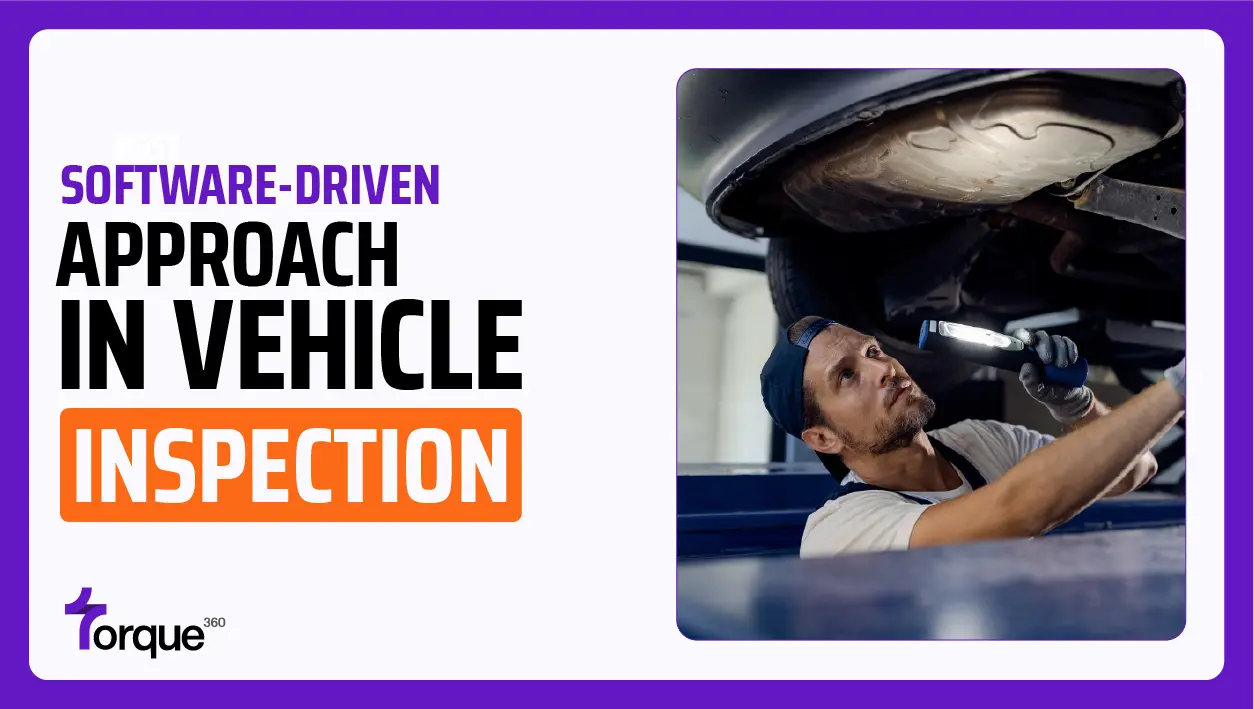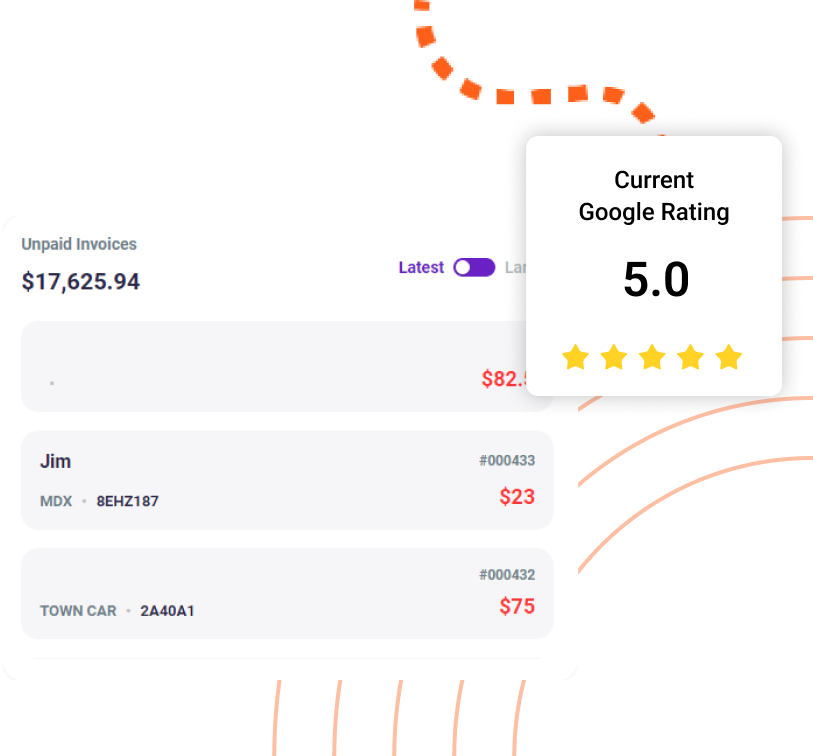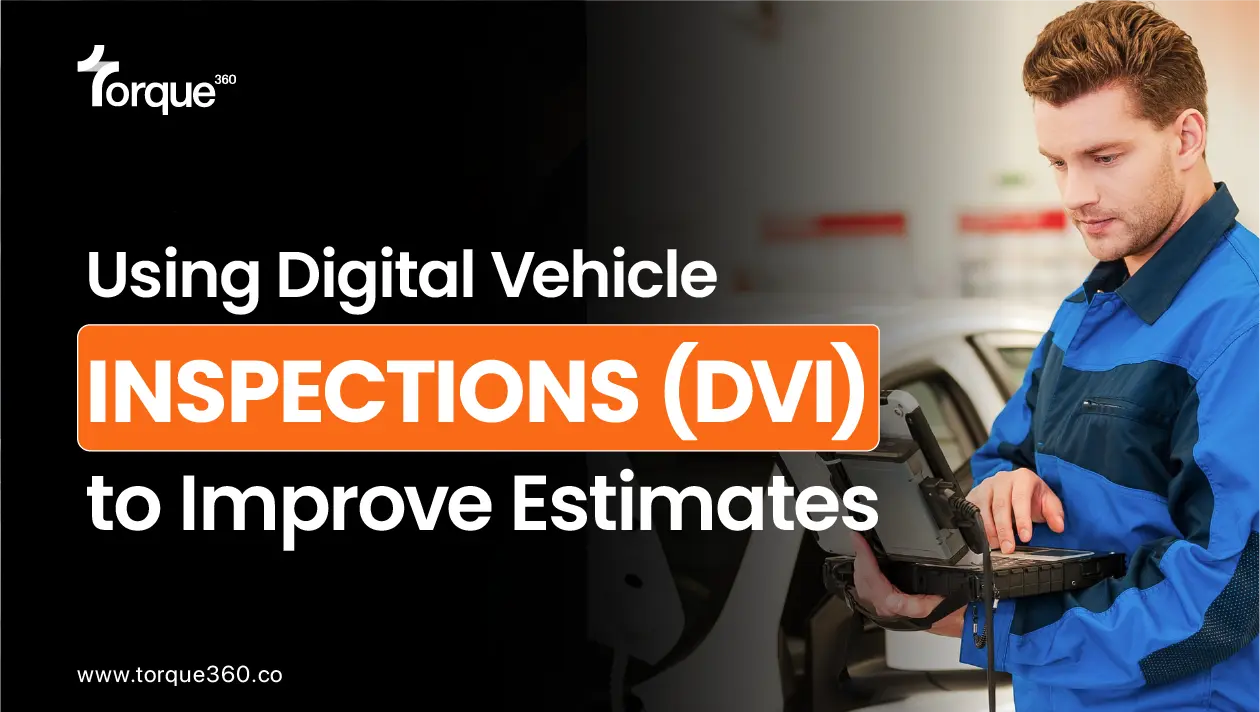Scaling an automobile repair business will be challenging in 2024. The whole automotive industry is experiencing a rapid shift at an unprecedented pace. The advent of hybrid and electric vehicles and their increasing popularity are changing how repair businesses operate. The evolution of technology, incredibly data-driven predictive maintenance, onboard diagnostic boards, and AI-powered software have eliminated the guesswork from repair businesses.
This blog will discuss the top 5 benefits of a software-driven approach to vehicle inspection and demonstrate how software solutions help enhance customer service and retention rates.
- Increased Accuracy and Consistency
- Minimized
- Enhanced Efficiency and Time Savings
- Improved Data Management and Analytics
- Transparency and Trust
- Integration with Other Systems
Increased Accuracy and Consistency
Modern repair shops rely increasingly on technology and data to suggest repairs and predict outcomes. A software-driven approach tremendously increases the efficiency and accuracy of the inspection process. Modern-day diagnostic tools like OBD-II, TPMS, thermal imaging cameras, multimeters, and oscilloscopes can be coupled with a centralized computer system. This helps technicians pinpoint faults accurately and create a log of issues and errors for the future.
Modern software for auto repair estimates is also linked with centralized systems for real-time billing estimates and empowers customers to make informed decisions. Here’s an example of how auto repair software works.
- Data from the system is received or manually added on the customer’s request.
- Estimating software customer’s part costs, delivery charges (if unavailable in-house), and labor costs.
- Estimate shows up on the UI and creates a transparent breakdown of costs.
Minimized Human Errors
Human errors are familiar, and most experienced technicians are prone to them. Several reasons, like fatigue, repetition, or subjective viewpoint, can cause a lapse in judgment.
On the other hand, software tools are free of these lapses as they follow strict algorithms and can assist technicians in identifying faults. This systematic approach reduces the likelihood of errors and omissions.
Human errors seldom result in accidents at the shop. However, such errors can cause injury or even equipment damage. Software tools effectively reduce fatigue-related safety concerns due to longer inspection times.
Efficient Time Management and Repairs
Traditionally, even experienced mechanics and technicians relied on the hit-and-trial method for inspection. It was a time-consuming process and often impacted the quality and reliability of repairs.
The modern inspection tools for vehicular inspection have significantly reduced the time required to find and fix the issues in automobiles. This means lesser turnaround time, enhanced efficiency, effective customer service, and improved profitability.
The reduced labor costs due to less time needed to get a job done significantly improve the shop’s financial performance.
Improved shop management and Analytics
Software tools help auto repair shops collect vehicle data. This data can include numbers like the brake pad’s thickness, exhaust tests to the chepad’s moxibustion, etc., and visuals like pictures. Modern repair shops also conduct thermal scans to get inside views of essential car parts.
This data can then be used to identify trends, common failure points, and potential malfunctions. The data informs the preventive maintenance decisions and helps customers avoid future roadside breakdowns. The data also helps repair shops convince customers to opt for predictive maintenance programs.
The software can easily create and manage the inspection/repair history. The ability to easily access historical inspection data helps track the health and maintenance of individual vehicles, facilitating better decision-making and lifecycle management.
Transparency and Trust
Modern drivers trust software tools. Smart cars inform drivers of vehicle health via onboard computers, and they expect the same from their trusted repair garages. A software-driven approach enhances trust, especially when mechanics provide detailed inspection reports with images and scanner data regarding vehicle health. The approach helps build confidence, improves customer satisfaction, and keeps them returning for future sales.
Integration with Other Systems
Digital inspection systems can become a part of software ecosystems for effective auto repair shop operations. For example, the data can be fed to marketing software via APIs to inform drivers when the next service is due. Also, inspection results can be coupled with inventory management software to automatically trigger maintenance workflows and update inventory records.
Conclusion
Implementing a software-driven approach helps auto repair shops improve operational efficiency, conduct adequate inspections, and optimize maintenance workflows. This approach also decreases the repair time required and increases customer satisfaction.






